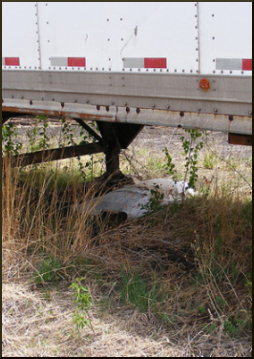
Funding for low-income housing projects is decided in part by the federally mandated annual count of people experiencing homelessness. Looking around at how it is done in different parts of the country, it’s easy to see that not everyone agrees about the way things should be, or even about the way things are.
Only last month, from San Francisco, the director of the Western Regional Advocacy Project voiced discontent, calling the census “hit-or-miss” and its result “an unreal number.” Paul Boden presents a case that the head count is ineffectual in showing an accurate picture of what actually goes on with programs designed to alleviate homelessness.
The accuracy is certainly questionable. An example he gives ends with the suggestion, “You figure it out,” and when a person stops to do that, an amazing conundrum emerges.
In 2011, the Department of Housing and Urban Development said that America contained 636,017 homeless people. (This is the same HUD, by the say, that since 1996 has sold or demolished 210,000 housing units.)
Yet, in the same year, the Department of Education reported the number of homeless school children as 1,065,794. In other words, the number of homeless school kids is much larger than the total number of homeless people — a logical impossibility. And the million-plus figure doesn’t even begin to count those kids’ parents.
Boden seems to imply that the homeless count is not a meaningful activity but an empty pro forma ritual. Actually, it’s more than an implication. He says:
The headcount doesn’t show us anything… Point-in-time counts are a minimum number, always. They undercount hidden homeless populations because homeless persons are doubling up with the housed or cannot be identified by sight as homeless. Families and youth most often are among the undercounted. On cold winter nights, churches often open their doors, and anyone forced to sleep outside will try to escape the raw elements. Children sleeping in vans hardly will be visible.
An uncredited editorial from the Deseret News talks about how numbers somehow showed that Utah’s population of “chronically homeless” has been reduced by 70% in seven years. Yet, somehow, on any given night, there are more homeless people than ever before. This presents a vision of agencies struggling heroically against an overwhelming trend.
According to the author, the count, which is carried out by volunteers:
[…] doesn’t take into account the ‘at-risk’ population that lives just on the verge of homelessness, which some experts suggest also has grown. Furthermore, the surveys have shown an increase in the number of entire families thrust into at least temporary homelessness…
In North Carolina, the Herald Sun asked Minnie Forte-Brown of the Homeless Services Advisory Committee for her take on the census, which was:
One night, the nation counts. No way does that say we’ve counted everybody.
The reporter goes on to say:
It rained the night of the count, which may have driven some to dry shelter. Even in good weather, though, at best this is a representative sample. It can’t take into account the homeless who — for one reason or another – go out of their way to remain unseen, squatting in abandoned buildings, living in cars or camping in the woods.
Pat LaMarche reported for The Huffington Post that the state of Texas has around 95,000 school-age kids. The distribution is very uneven, with one out of 10 American kids in that demographic residing in Texas, and House the Homeless will be taking a closer look at the beautiful city of Austin next week. Meanwhile, critics on the national scale are unhappy with the status quo for many reasons.
Joel John Roberts of Poverty Insights articulates some of them:
If you look at the last few decades, this country has dramatically ignored real solutions to ending homelessness… Political leaders grandstand in front of television cameras, ‘Homelessness should not be tolerated in this country!’ But when the lights turn off, political business continues as usual. Homeless agencies practically beg for resources to help the lines of people wanting help. But the number of homeless persons in this wealthy country continue to be obscene.
Roberts encourages readers to learn about the “100,000 Homes” campaign, which almost 70 American cities have signed on to, and which reports a success number of 38,575 people housed by its efforts.
House the Homeless co-founder Richard R. Troxell knows far too well about the inaccuracy of the homeless count and declares that the current policies of the federal government are the greatest single fabricator of homelessness in this nation. To that end, he is in the process of collaborating on writing the nation’s first White Paper on the subject. It’s entitled “Homelessness Prevention” (at its core). Stay tuned.
Reactions?
Source: “Homeless head counts help no one,” SFGate.com, 02/05/13
Source: “In our opinion: Counting the homeless,” Deseret News, 02/08/13
Source: “Rhetoric won’t solve homeless dilemma,” The Herald-Sun, 02/24/13
Source: “About 1 in 10 Homeless Kids Live in Texas,” The Huffington Post, 02/19/13
Source: “We Cannot Count on Homeless Counts to end Homelessness,” PovertyInsights.org, 02/07/11
Image by John Jewell.


